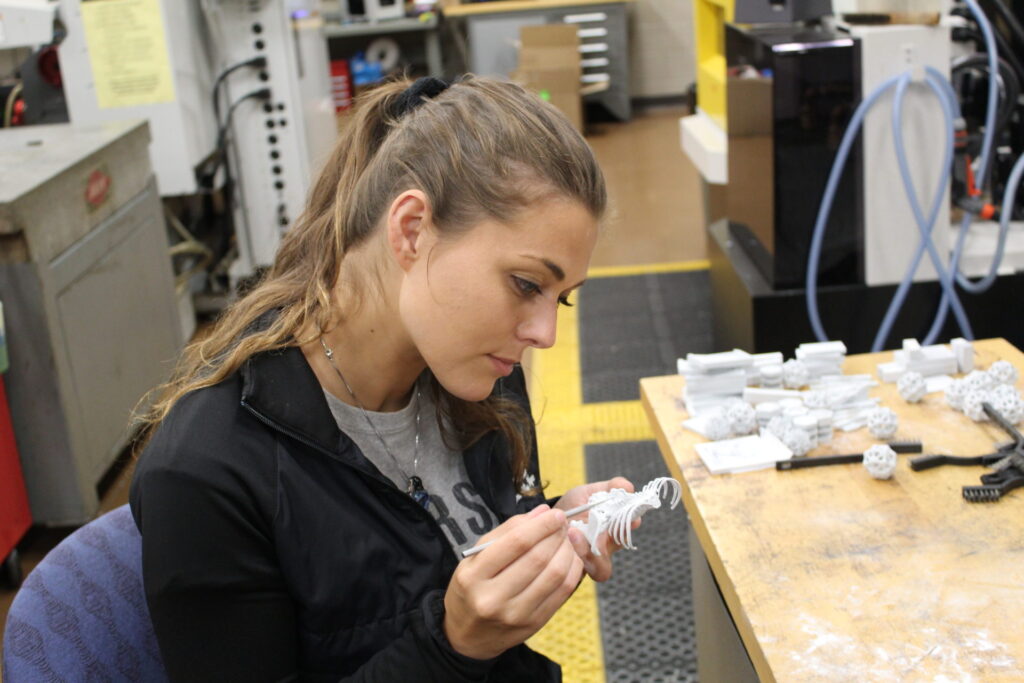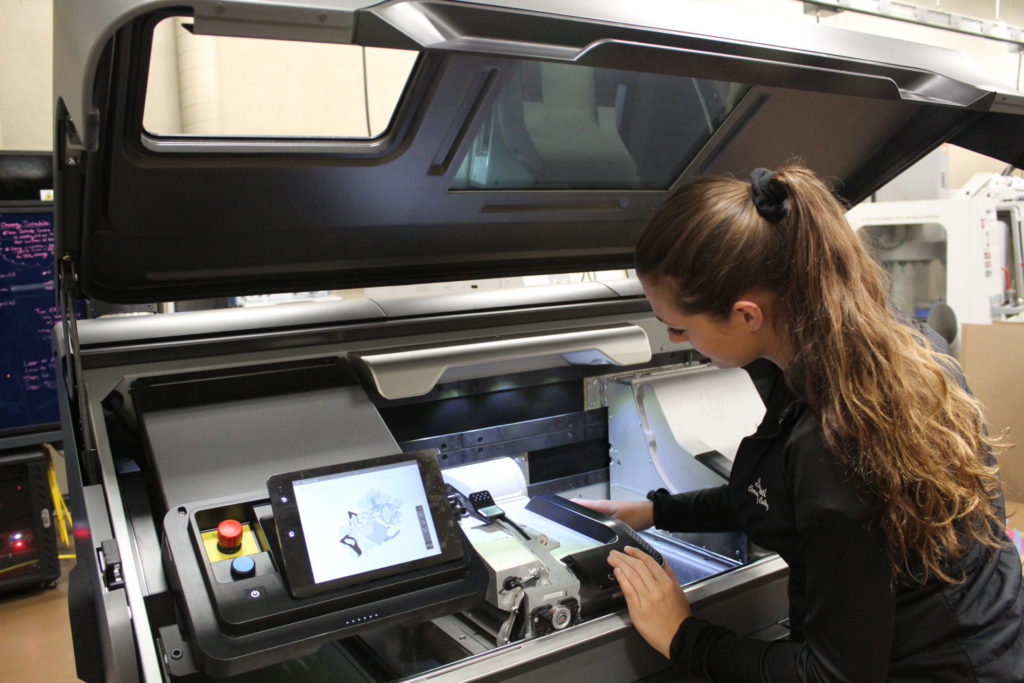
It all started with Heather Beebe’s skull—her 3D printed skull, that is. Beebe was a pre-med student collaborating with Eric Wooldridge, professor and head of the additive manufacturing program at Somerset Community College (SCC)in Kentucky. Together, they worked to3D print an actual MRI scan of Beebe’s skull, with the goal of helping to illustrate innovative opportunities for 3D printing applications in the biomedical industry.Their work caught the eye of the National Science Foundation(NSF),and soon after, Beebe and Wooldridge found themselves with grant money that would eventually help establish SCC’s boundary-pushing 3D printing program.
As an engineer, Wooldridge understood the massive opportunity that additive manufacturing offered and wanted to contribute to the engineering community in his state.His first step was to buy the college’s first-ever 3D printer in 2013. A few years later, SCC’s Digital Printing Technology program was born—the first of its kind in Kentucky—and has since attracted hundreds of students from diverse backgrounds to learn foundational principles in 3D printing.
While a technical education in 3D printing would normally focus on the underpinnings of manufacturing, Wooldridge’s program stays ahead of the curve by teaching the principles of both designing and manufacturing using next-generation technology like generative design. Using Autodesk® Fusion 360®technology to accelerate end-to-end product development, students can adapt quickly to the future of making.As a result, they improve the quality of their manufacturing projects and graduate proficient in the language of design and manufacturing.
All of the institutions I was seeing with 3D printing programs were teaching conventional manufacturing methods. I didn’t see a whole lot of next-generation design incorporated into curriculums, including generative design. This is what I set out to do—create an inclusive program for students of all skill levels to learn the latest in manufacturing technology and design
Wooldridge
Where technical skills and business acumen overlap
Wooldridge worked in the industry before running the 3D printing program at SCC and has relied on this experience to inform the nature of the curriculum. With the goalof educating students with both technical skills and business acumen, Wooldridge created a next-generation additive manufacturing program that is focused on helping students succeed in their careers.
I built my own curriculum based on what’s really happening in the workplace. I wanted to bridge the gap between skills learned in a classroom and skills needed in the workforce, and I wanted my students to graduate from this program and be able to understand both the technology and the business of 3D printing
Wooldridge
Wooldridge’s foresight led to a well-rounded curriculum where the foundations of business matter just as much as the concepts of technical design and manufacturing.

Academia meets industry
SCC is uniquely positioned to support the manufacturing community in Kentucky given the state’s number one export—aerospace products. Additive manufacturing could potentially have a big impact in the state, and Wooldridge has the opportunity to bridge the gap between preparing students and engaging with industry.
Back in 2016 when the program was just getting started, many companies in and around Kentucky were uninformed on the benefits of additive manufacturing. Slowly, Wooldridge educated local companies with solid case studies that quantified potential cost savings from the use of 3D printing. Acting as a 3D printing consultant and mentor, Wooldridge straddles the line between industry and academia. It turns out that playing both roles is synergistic in nature. Wooldridge works closely with companies to understand their manufacturing needs, and this serves as inspiration for the kinds of experiences and skills that will best prepare his students to enter the marketplace. And with Fusion 360, students can discover more solutions, make better decisions for improved project outcomes, and prepare to operate at the forefront of industry in Kentucky.
Why Fusion 360?
The 3D printing program’s distinguishing factor is the role advanced product design plays in the curriculum. Wooldridge chose to incorporate Fusion 360 into his curriculum because of the access to generative design, which has enabled him to bring new technologies into academia. Fusion 360 helps enrich the curriculum with new features and functionality that are continually added to the software, like file storing and collaboration. And because the spectrum of design and make workflows are housed under one software program, the logistics of having to teach all the material to a group of students is vastly simplified.
One of the major challenges the 3D printing program faces is the fact that so many students participate remotely—and remote students need remote software installation. With the collaborative cloud approach in Fusion 360, students can install the software without much need for technical experience. This not only helps students get up and running, but it frees program resources to go beyond troubleshooting.
Given that the 3D printing program must contend with limited funding resources, the fact that students and educators get free access to Fusion 360 creates a real value and opportunity for students around the state. According to Wooldridge, “The fact that our students can access professional-level software for free offers them an opportunity that would otherwise not be possible for many students in Kentucky, and that was a requirement for us.”
The future of manufacturing
SCC is a shining example of how academia is pushing the limits of education with next-generation technology in ways that create opportunities for students and aid in the development of next-generation products. Wooldridge is adamant about creating a culture within his program that encourages open-mindedness, creativity, and the profound understanding that anyone anywhere can feel empowered to make an idea into reality.
For us, it is evident that the future of manufacturing will be in advanced design and advanced material access. While we will continue to use conventional manufacturing processes, there will be a well-defined leap associated with additive manufacturing’s ability to produce complex geometries and use next-gen materials to make next-gen products. We are already seeing this in the market today. Things are only going to continue to get lighter, faster, and stronger and processes are going to become more time- and parts-efficient. This next-generation technology will also influence conventional manufacturing for better problem solving and design overall
Wooldridge